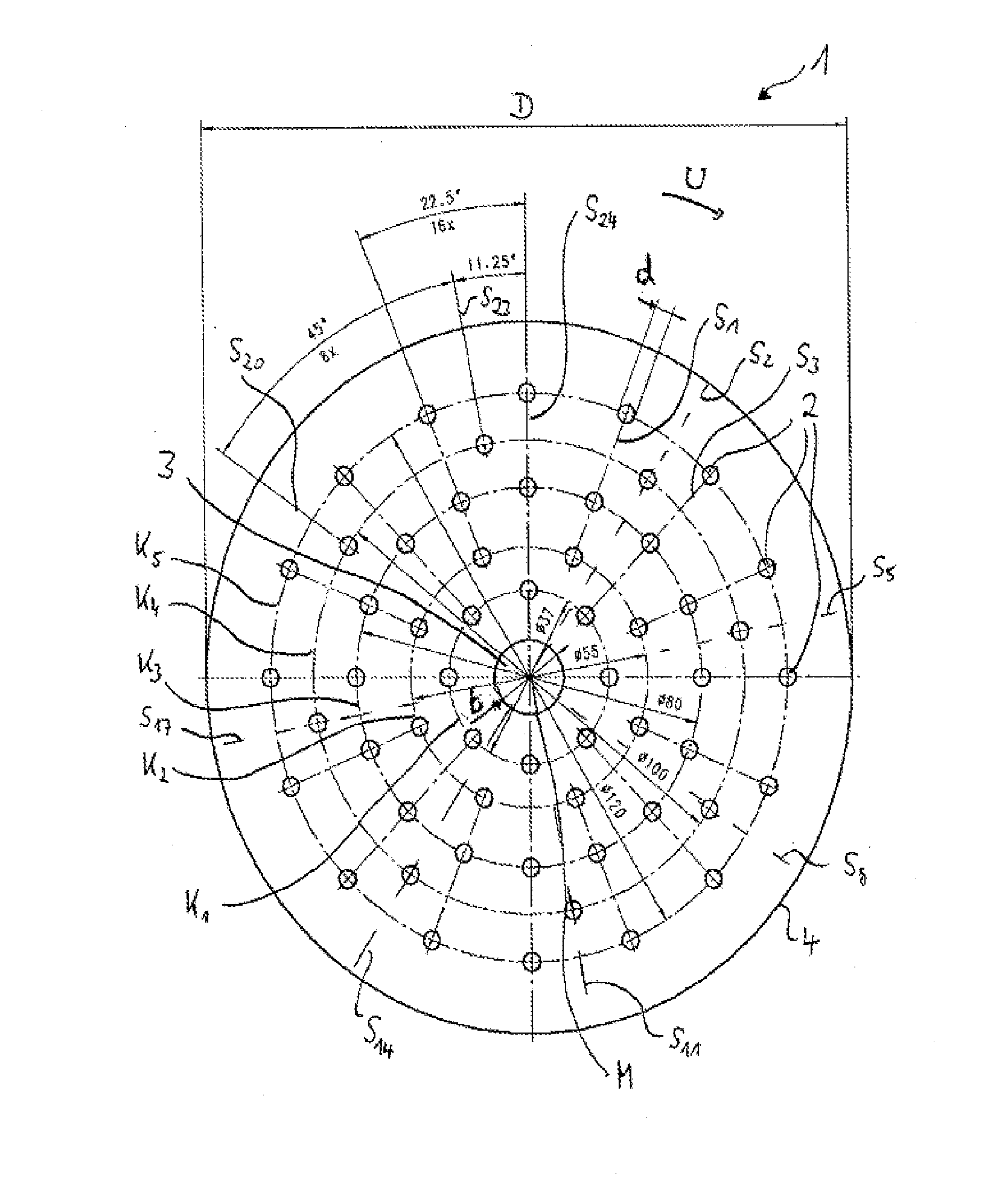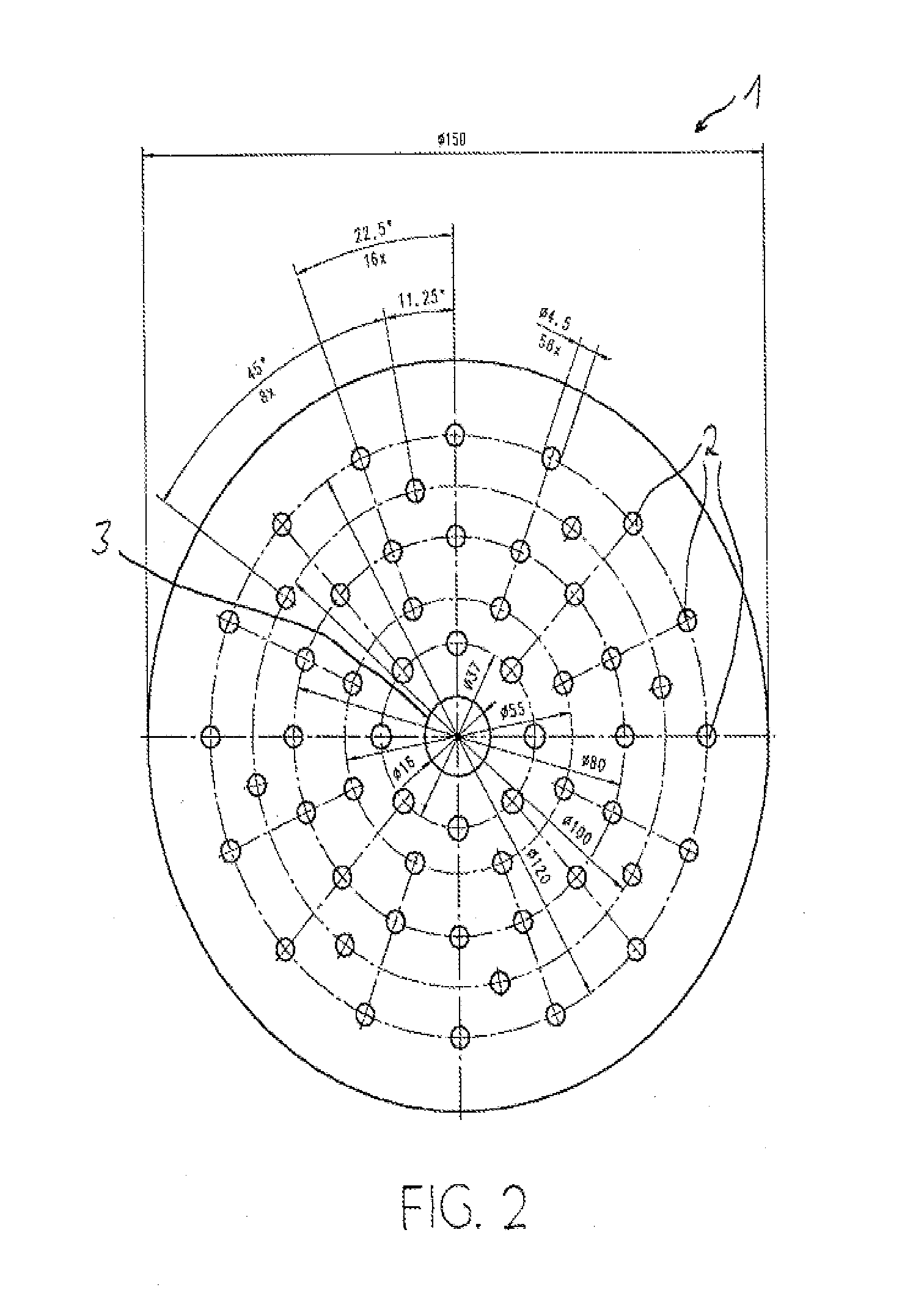Grinding wheel
a technology of grinding disks and grinding wheels, which is applied in the direction of supporting wheels, grinding/polishing hand tools, metal-working equipment, etc., can solve the problems of short service life, disks must be changed, and high labor intensity
- Summary
- Abstract
- Description
- Claims
- Application Information
AI Technical Summary
Benefits of technology
Problems solved by technology
Method used
Image
Examples
Embodiment Construction
[0042]The first embodiment, represented in FIG. 1, shows a circular grinding disk 1 with a diameter D=150 mm. Arranged at the center of the grinding disk 1 is a circular fastening opening 3 with a diameter of b=16 mm, by means of which the grinding disk 1 can be connected in a way known per se to a grinding pad that is not represented here. The grinding disk 1 contains an imaginary center point M, which represents the geometrical center point of the circular outer circumference 4 of the grinding disk 1.
[0043]The grinding disk 1 contains a total of nL=56 circular extraction holes 2 with a diameter of 4 mm. The center point of each extraction hole 2 is arranged both on one of nS=24 radial lines extending from the center point M and on one of nK=5 circles of holes K1, . . . , K5 with associated radii r1=18.5 mm, r2=27.5 mm, r3=40 mm, r4=50 mm and r5=60 mm. Arranged on the circles of holes K1, . . . , K5 are the center points of nL1=8, nL2=8, nL3=16, nL4=8 and nL5=16 extraction holes 2,...
PUM
 Login to View More
Login to View More Abstract
Description
Claims
Application Information
 Login to View More
Login to View More - R&D
- Intellectual Property
- Life Sciences
- Materials
- Tech Scout
- Unparalleled Data Quality
- Higher Quality Content
- 60% Fewer Hallucinations
Browse by: Latest US Patents, China's latest patents, Technical Efficacy Thesaurus, Application Domain, Technology Topic, Popular Technical Reports.
© 2025 PatSnap. All rights reserved.Legal|Privacy policy|Modern Slavery Act Transparency Statement|Sitemap|About US| Contact US: help@patsnap.com



